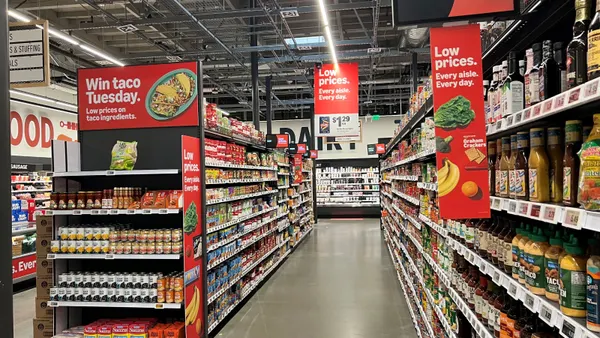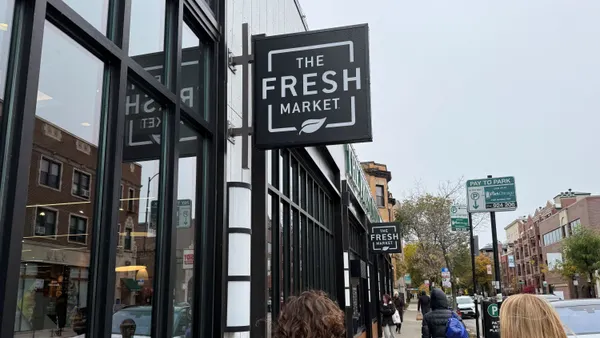Dive Brief:
- The changes in consumer buying and eating habits brought on by the pandemic are creating ripe conditions for sustained growth at wholesale clubs because of their emphasis on selling large quantities of goods at bulk prices, Christopher Baldwin, executive chairman of BJ’s Wholesale Club, said Wednesday during a webinar hosted by Coresight Research.
- Efforts by suppliers to keep goods flowing to consumers is resulting in fewer choices in some cases, Baldwin said. For example, suppliers are moving away from offering multiple varieties of high-demand products like soap and paper goods in order to focus on making sure consumers have access to staples.
- Supplies of meat and eggs are improving, but vegetables are in especially short supply, with canned vegetables particularly hard to find, Baldwin said. “In food, I don't think we broke the supply chain, but we pushed it about as far as it could go,” he said.
Dive Insight:
Warehouse clubs have long cultivated a following among people looking to save money by purchasing food and other products in bulk, but the pandemic is shining a spotlight on the value people see in being able to get large amounts of things in a single trip.
“The idea of shopping in a couple of places over the course of a week is less likely in this environment than it has ever been in the last 15 or 20 years,” Baldwin noted during the webinar.
A key challenge for the membership-based retailer is that shoppers already stressed by being stuck in their homes are often upset to find that what they want is not currently available. “There’s some anxiety there today that wasn’t there a couple of months ago,” Baldwin said. “When people are anxious and then they see they can’t get the canned vegetable they want, they can’t get the chicken they want, they can’t get the beef they want, it makes it worse, not better.”
BJ’s saw sales rise 27% during the first quarter of 2020 and is continuing to record elevated sales. E-commerce sales have been especially strong, putting pressure on the company to figure out how to efficiently move products to people’s homes after years of specializing in stocking 100,000-square-foot warehouses.
“The supply chain of 30 years ago was focused on the store. Now our supply chains are more focused on every household in America,” said Baldwin.
The company, which runs about 210 warehouses in 16 Eastern states and has been stepping up its emphasis on groceries, is using its deep knowledge of what people buy to better tailor the assortment of products it sells in its warehouse to the markets each location serves, Baldwin said. That means a location that serves urban customers might place less emphasis on lawn products, which are likely to appeal more to suburban shoppers.










